Seventh & Broadway: Photos of Downtown's Crossroads through the Decades

Quoting John E. Fisher of the L.A. Department of Transportation, the L.A. City Nerd recently shared this interesting fact on Facebook: in 1924, the downtown L.A. intersection of Seventh Street and Broadway was the busiest in the world with 504,000 people crossing those streets each day.
The chaotic scenes captured in the photograph above would have been unfathomable to someone standing at Seventh and Broadway in middle of the nineteenth century. Running more than a mile southwest of the original pueblo, Seventh Street was little more than a line on surveyors' maps. Broadway, then known as Fort Street, lost itself in the agricultural lands that separated Seventh street from L.A.'s original urban core.
The intersection first gained notability in 1865, when St. Vincent's College opened on the intersection's northwest corner. Since renamed Loyola Marymount University, the boys' college occupied the entire city block bounded by Broadway and Seventh, Hill, and Sixth streets. St. Vincent's Court, a quaint alleyway, traces the path of the college's driveway.
But for many years, St. Vincent's represented the edge of L.A.'s urban development. It was after Southern California's population boom of the 1880s -- brief but spectacular -- that Seventh and Broadway grew into a true intersection of city streets. Amid the influx of settlers and tourists from the Midwest, several buildings rose around the intersection, including the fashionable Lankershim Flats hotel.
As Los Angeles entered the twentieth century, the area around Seventh and Broadway became the city's commercial center. James B. Lankershim opened a new, nine-story hotel at the intersection in 1905. His original hotel, meanwhile, came down to make way for John Bullock's seven-story department store, which opened in 1906. Fifteen years later, the Loew's State Theatre -- one of several movie palaces to locate on Broadway -- opened across the street.
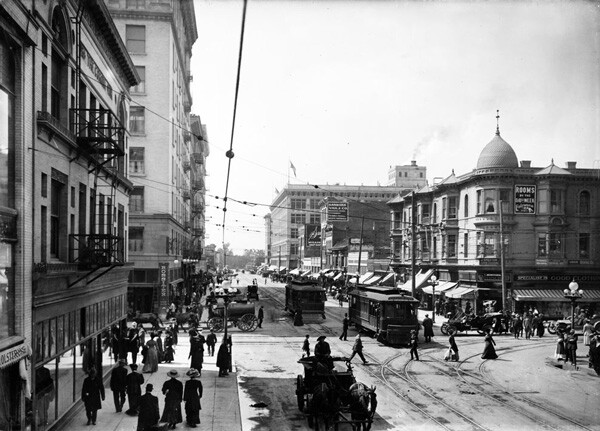

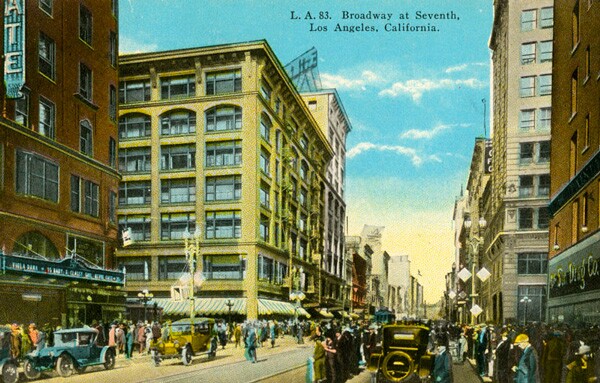

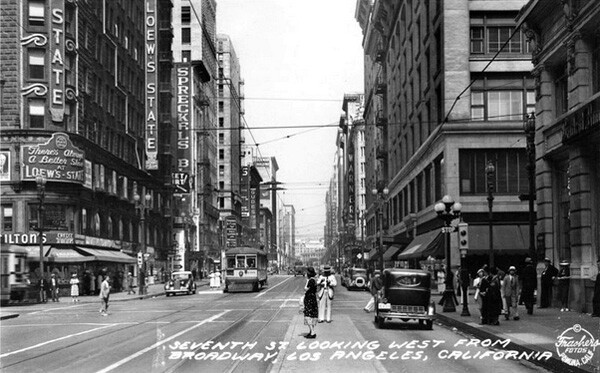
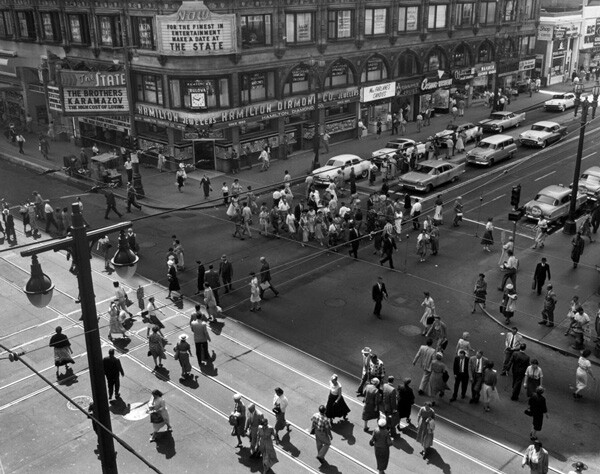

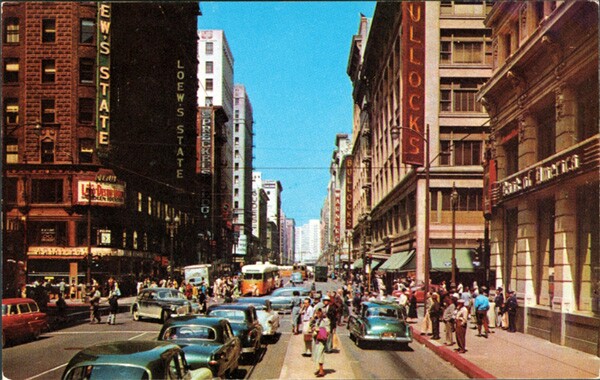
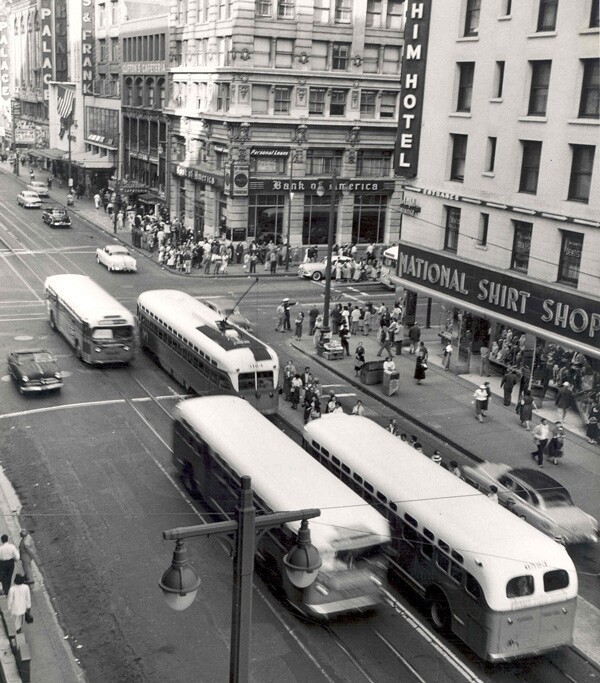
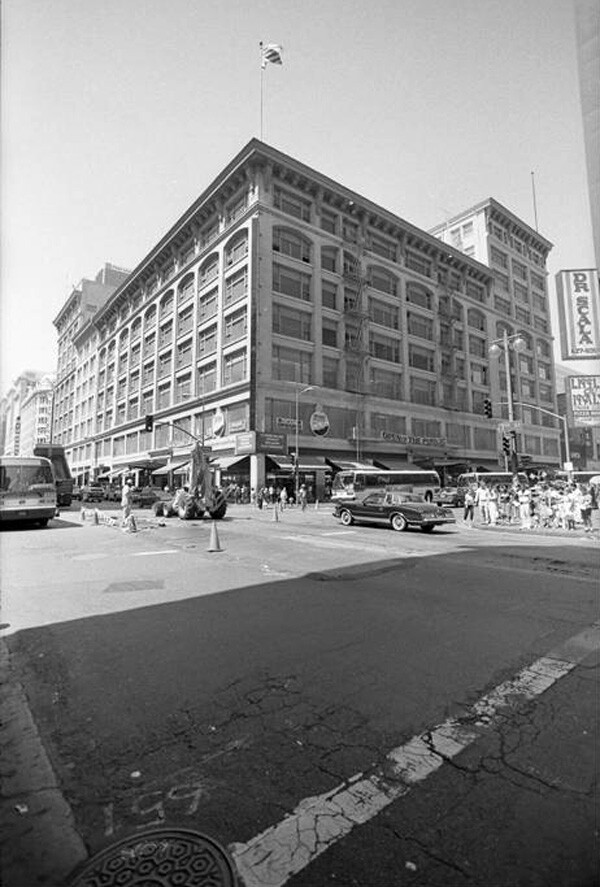
Though these buildings gave the intersection a visual identity and attracted thousands of shoppers and theatergoers on a daily basis, Seventh and Broadway was perhaps best defined by its role as a crossroads. Broadway served as an important retail corridor and hosted the city's early theater district. Seventh Street likewise became home to a collection of upscale retail shops, and as the street ran to the south of Bunker Hill, it became an important route between downtown and L.A.'s growing suburbs to the west.
The local Los Angeles Railway streetcars (Yellow Cars) and the interurban Pacific Electric Red Cars crossed the intersection, and when Congress defined Route 66 in 1926, it designated the intersection of Seventh and Broadway as its western terminus. The route was later extended to Santa Monica.
Thus, by 1924, more than half a million people traversed the intersection daily -- 200,000 in streetcars, 35,000 in autos, and 269,000 on foot. London's Hyde Park Corner, by comparison, saw only 478,000 pass through each day. In 1930, the intersection's daily traffic exceeded 750,000.
By then, though, downtown Los Angeles' importance as a commercial center was already waning. Rival shopping districts like A.W. Ross' Miracle Mile drew customers -- and retail chains -- away from Broadway and Seventh Street, and downtown's notoriously congested streets slowed streetcar service and encouraged Southern Californians to avoid the city's historic core by staying in their automobile suburbs.
Downtown's decline continued throughout the city's postwar years, and Seventh and Broadway slowly transformed from its status as shopping mecca to a more modest role as the heart of the city's discount jewelry district. In 1983, the flagship Bullock's department store at Seventh and Broadway closed, and the building became a jewelry mart. Other nearby buildings, meanwhile, sat vacant, including Broadway's grand movie palaces.
In recent years, the intersection has been a focal point for efforts to revitalize Broadway. The Los Angeles Conservancy's Last Remaining Seats series opens the street's historic theaters to preservation-minded moviegoers each summer, while Bringing Back Broadway -- a joint initiative by city leaders, property owners, and the Conservancy -- promises to give new life to the thoroughfare's stately structures. A streetcar may soon roll through the intersection for the first time in decades, Meanwhile, Seventh Street's emergence as downtown's restaurant row crowds the intersection's crosswalks each night. Its former title as the world's busiest crossroads may be beyond its reach, but Seventh and Broadway still hums with the life of the city.
The Buildings of Seventh & Broadway
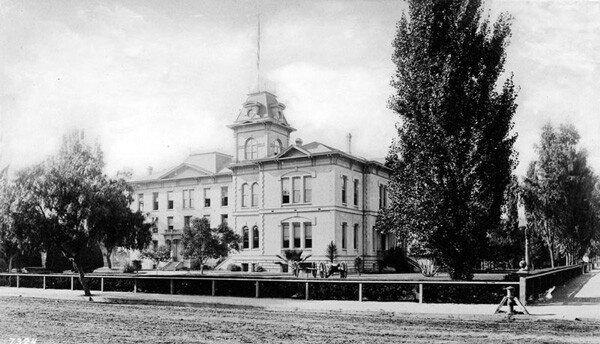

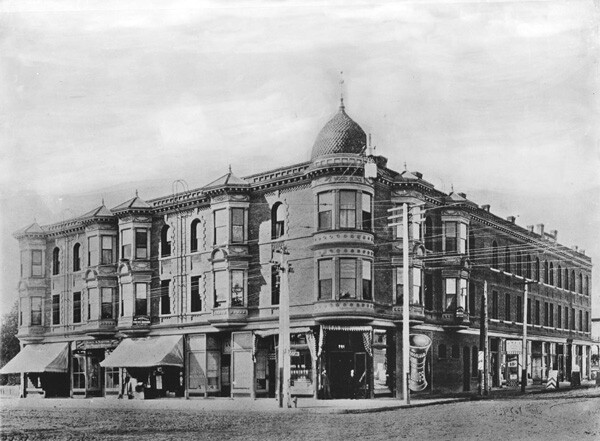
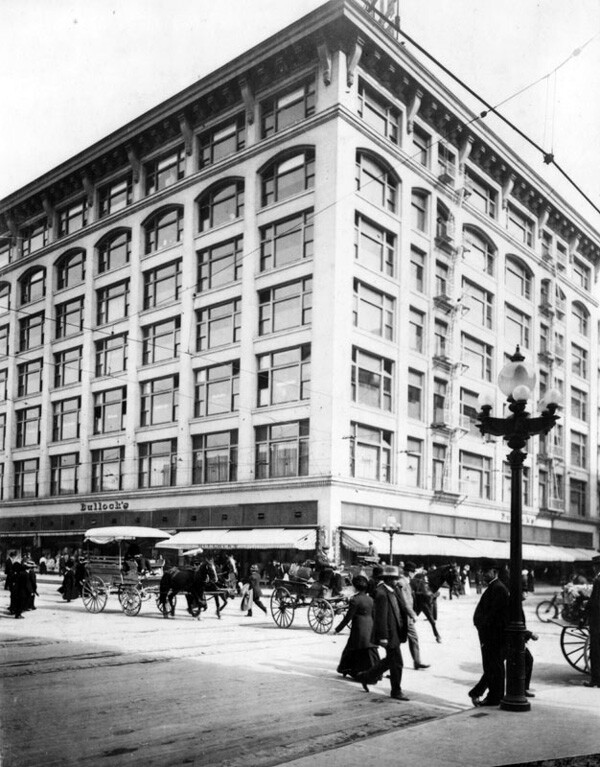
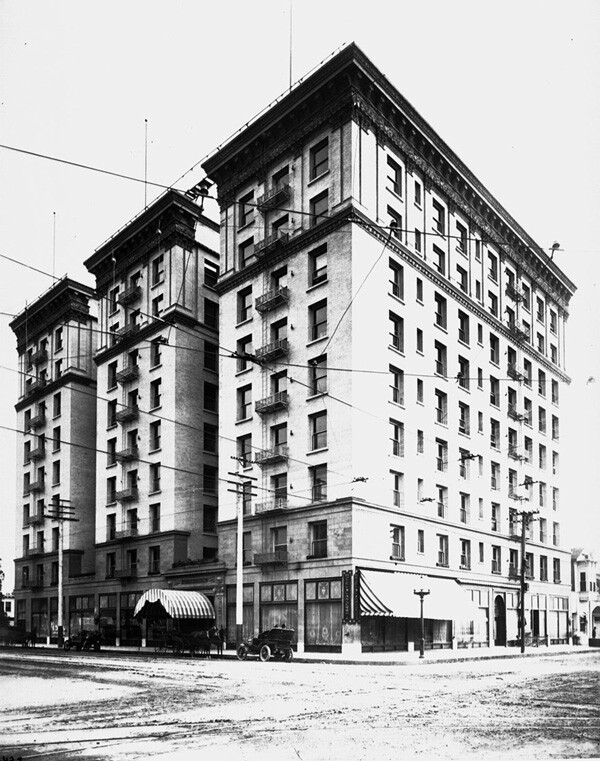
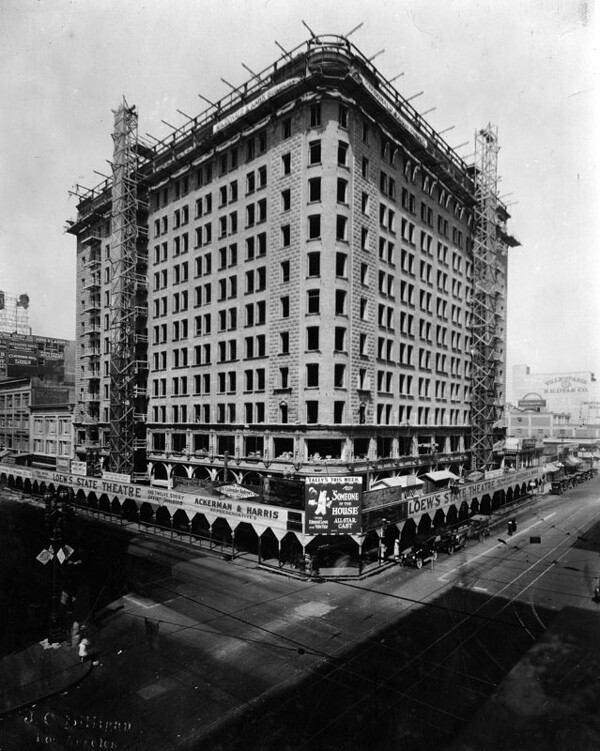

Many of the archives who contributed the above images are members of L.A. as Subject, an association of more than 230 libraries, museums, official archives, personal collections, and other institutions. Hosted by the USC Libraries, L.A. as Subject is dedicated to preserving and telling the sometimes-hidden stories and histories of the Los Angeles region. Our posts here provide a view into the archives of individuals and cultural institutions whose collections inform the great narrative—in all its complex facets—of Southern California.
Read more L.A. as Subject posts here at KCET.org, and follow us on Facebook and Twitter.